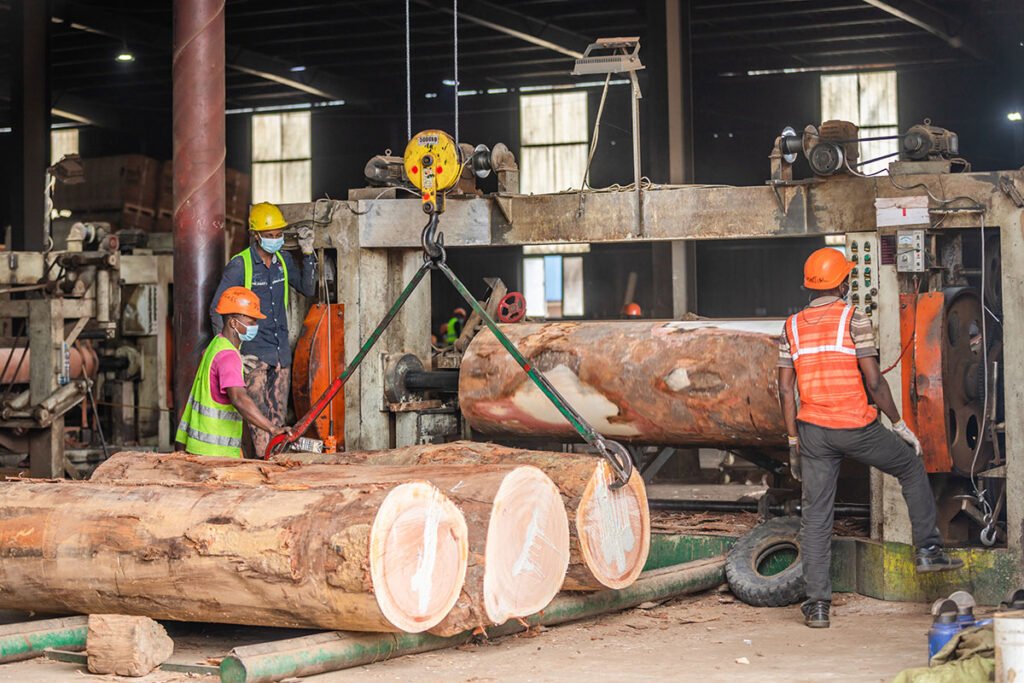Key Takeaways
| Okoume Face Veneer | A thin slice of wood from the Okoume tree, a species native to west-central Africa |
| What is it? | It has consistent colour and texture and good durability for outside use. |
| Why use it? | It can create elegant and exotic furniture pieces that enhance the beauty of your home |
| How to use it? | It can create elegant and exotic furniture pieces that enhance the beauty of your home. |
What is Okoume Face Veneer?
Okoume face veneer is a delicate slice of wood sourced from the Okoume tree (Aucoumea klaineana), a species native to west-central Africa, particularly Gabon, Equatorial Guinea and the Republic of Congo1. Many names, including Acoume, Gaboon veneer, Uume and Zouga, know the veneer of this tree.

Okoume face veneer has a pale pink to light brown colour that darkens with age. The grain patterns can resemble mahogany and one of Okoume’s lesser-used commercial names is Gaboon mahogany. However, it is not related to African mahogany (Khaya spp.) or the New World Swietenia species. The wood has a medium texture and a good natural lustre.
Okoume face veneer is commercially vital in Gabon, where it is the principal timber species. It is also exported to other countries, especially in Asia and Europe, where it is used for various purposes.
Why Use Okoume Face Veneer?
Okoume face veneer has many advantages that make it a suitable choice for furniture making. Here are some of the reasons why you should consider using Okoume face veneer for your next project:

- It has a consistent colour and texture that can create a uniform and elegant look for your furniture pieces.
- It has good durability for outside use, as it is rated moderately durable and resistant to decay and insect attack.
- It is easy to work with, as it has a low density and a high silica content that reduces the blunting effect on cutters. It also glues and finishes nicely.
- It is environmentally friendly, as it comes from a sustainable source that follows the principles of restricted wood harvesting and natural forest regeneration. It holds a ‘vulnerable’ status according to the International Union for Conservation of Nature, signifying that it is not currently endangered or under immediate threat.
How to Use Okoume Face Veneer?
Okoume face veneer can be used for various applications, depending on your preferences and needs. Here are some of the common ways to use Okoume face veneer for your furniture:
- Interior applications: Okoume face veneer can be used for interior applications, such as window and door frames, doors and cladding. “It can imbue your living space with a warm and welcoming atmosphere while radiating an air of sophistication and refined elegance. You can also use Okoume face veneer to cover existing furniture pieces, such as cabinets, shelves and tables, to give them a new look and feel.
- Plywood: Okoume face veneer is most commonly sold as veneer and plywood, which can be used for various purposes, such as boatbuilding, musical instruments, furniture and interior millwork1. Okoume plywood is a very high-quality product and can be a speciality of Gabon if made that way. It can provide a strong and stable base for your furniture and a smooth and attractive surface.
- Other uses: Okoume face veneer can also be used for other creative and innovative purposes, such as making sculptures, artworks, jewellery and accessories. You can use your imagination and skills to create unique and beautiful items that showcase the beauty and versatility of Okoume face veneer.
Final Thoughts
Okoume face veneer is a beautiful material that can make your furniture shine. It has a consistent colour, texture and good durability for outside use. It is easy to work with, environmentally friendly and versatile. You can use it for things inside, making plywood, and more, depending on what you like and need. Okoume face veneer can help you create elegant and exotic furniture pieces that enhance the beauty of your home.

